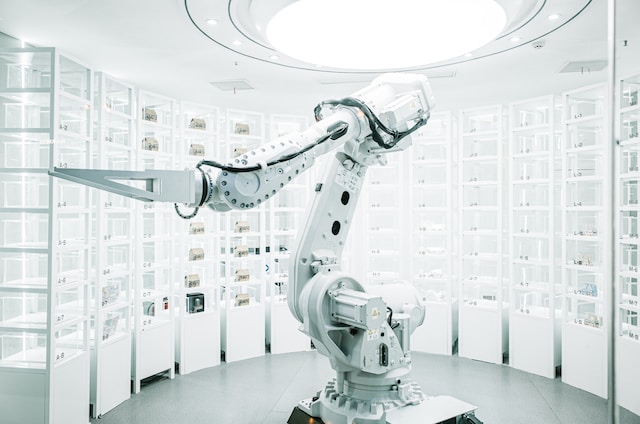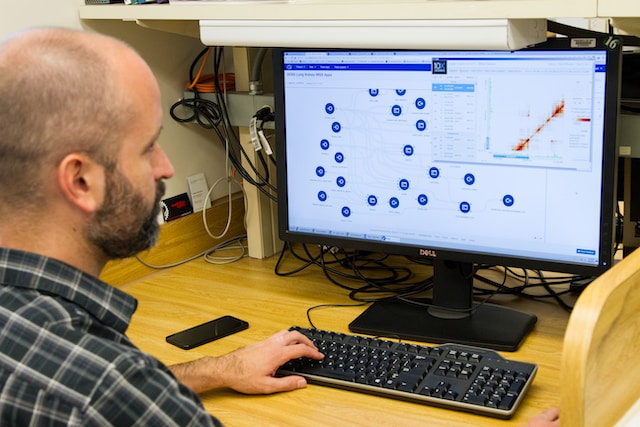The healthcare business faces various obstacles in today’s fast-paced environment. Medical practitioners have a tough burden due to the massive volume of everyday medical data and the necessity for accurate and timely information. Semantic technologies, on the other hand, provide a ray of optimism.
This article investigates how semantic technologies might benefit healthcare by increasing data interoperability, diagnosing and treating patients, and eventually altering the healthcare environment.
Semantic Technologies Improve Data Interoperability
Data fragmentation across many systems and platforms is a key concern in medicine. EHRs, laboratory data, and patient histories are frequently stored in diverse forms and locations. This fragmentation might make it difficult for medical personnel to quickly obtain full patient information. What role do semantic technologies play in healthcare? They provide a solution by offering a standardized architecture for data integration.
Semantic technologies, such as the Semantic Web and healthcare, enable the generation of linked data that links disparate information sources. These technologies provide a shared understanding of medical data by using standardized ontologies and vocabularies. Using the SNOMED CT ontology, for example, guarantees that words like “hypertension” have a consistent meaning across systems.
This interoperability guarantees that medical practitioners have access to complete patient information, allowing them to make more informed decisions and deliver better patient care.
Improving Diagnosis and Treatment
Semantic technologies benefit healthcare and have the potential to change precision medicine. The capacity to combine and evaluate disparate datasets, such as genetic data, clinical records, and research findings, can result in more accurate diagnoses and individualized treatment strategies.
The semantic annotation of medical literature is made possible by semantic technologies and healthcare, making it simpler for doctors to obtain relevant research and remain up to speed on the newest breakthroughs in their profession.
Furthermore, they can help clinical decision support systems (CDSS) by making context-aware suggestions to healthcare providers. When a clinician reads a patient’s EHR, for example, the CDSS can employ semantic technologies to recommend appropriate treatment choices based on the patient’s medical history and present state. It enhances care quality and lowers the chance of medical mistakes.
Transforming the Landscape
The incorporation of them into healthcare has the potential to completely change the business. We may predict numerous revolutionary outcomes as more enterprises implement semantic web standards:
- Efficient Data Sharing: Enable secure and efficient data sharing among providers, ensuring that critical information is readily available when needed.
- Patient Empowerment: Patients can benefit from them by accessing their health data and participating actively in their care.
- Research Advancements: The semantic annotation of research articles and clinical trials will accelerate the discovery of new treatments and therapies.
- Streamlined Workflows: Medical professionals can enjoy streamlined workflows, reducing administrative burdens and allowing more focus on patient care.
The Potential of Semantic Technologies in Healthcare
They are developing as strong instruments for improving healthcare that go beyond data integration and precision medicine. Let’s look at how these technologies may be used to transform workflows, empower patients, and contribute to new research.
Streamlined Workflows and Healthcare Efficiency
Administrative complexities are common in healthcare workflows. By automating and improving numerous administrative activities, semantic technologies can help to ease this strain. These technologies, for example, can help with medical coding and billing by utilizing natural language processing and semantic analysis.
Not only does it eliminate mistakes, but it also speeds up the reimbursement process for healthcare providers.
Integrating them can also improve the efficiency of electronic health record (EHR) systems. Semantic data models improve the usability of EHRs by allowing clinicians to swiftly discover and update patient information. It simplifies daily activities, freeing up time for direct patient care.
Empowering Patients Through Semantic Technologies
Patients’ roles in healthcare are shifting from passive recipients to active participants. Patients may readily access their health data and discuss decision-making with their physicians thanks to semantic technology.
Patient portals, which are enabled by them, provide patients with secure and user-friendly interfaces for reviewing their medical information, scheduling appointments, and communicating with their team.
Furthermore, semantic-capable wearable gadgets and health applications may collect real-time health data. This information may be automatically incorporated into a patient’s EHR, giving healthcare practitioners a complete picture of the patient’s health. Patients may monitor their progress, obtain individualized health advice, and make educated lifestyle decisions, giving them a sense of control over their health.

Fueling Research Advancements
Such technologies serve as accelerators for medical research developments. Annotating research papers, clinical trials, and medical datasets using semantic metadata speeds up the discovery of new treatments and cures. To assist their investigations, researchers may do more specific literature reviews, locate possible partners, and obtain data from a variety of sources.
Semantic technologies also allow for the integration of genetic data with clinical information. This integration is critical for expanding our molecular knowledge of illnesses and personalizing therapy to particular individuals. With its potential to connect disparate information, the Semantic Web opens up new paths for translational research, ultimately leading to revolutionary therapeutics and personalized medicine breakthroughs.
Conclusion
Finally, semantic technologies have the ability to unleash the full potential of healthcare by improving workflows, empowering patients, and stimulating research developments. The future of healthcare promises to be more efficient, patient-centric, and knowledge-driven as they continue to improve and achieve greater adoption within the ecosystem.



